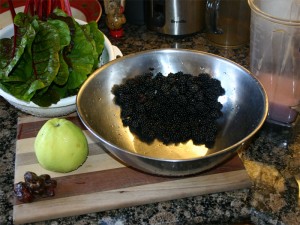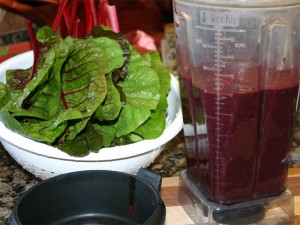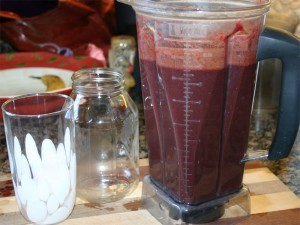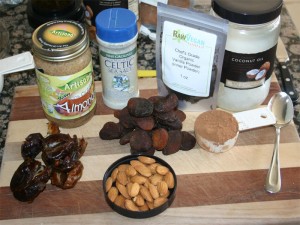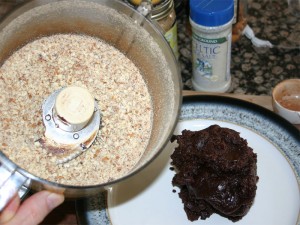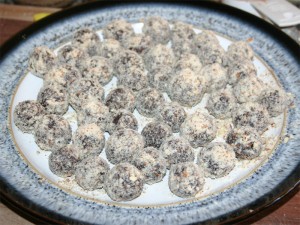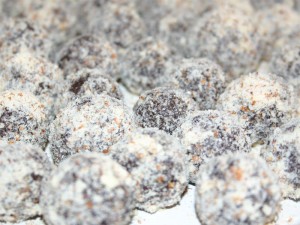I’ve been telling everyone in my family for at least the last ten years that when I turned fifty, my life was going to change. I’ve been thinking about retiring for a long time. If not that, taking a couple years off to, say, learn Spanish and live in South America. Or maybe ‘retool’ by going back to some technical school. I even looked into what it would take to become a Naturopathic Doctor (ND). But each time I brought it up, the timing wasn’t quite right. It remained a future event.
Last April, I turned fifty.
Last weekend I attended my first yoga teacher training class at 8 Limbs Yoga in Seattle.
I now know what I’ve been waiting for.
The Basic Teacher Training program that 8 Limbs put together is 16 days – spread out over five months as five extended weekends. It’s a combination of lectures, discussions and hands on – hold it tell you learn it – yoga. You get a very detailed introduction to anatomy and Sanskrit which both come with the work of learning foreign languages and, my favorite part, yoga philosophy.
I love the fact that Yogis have named so many concepts that have been such a strong part of how I live my life. The philosophical understandings that I grew up around and live by all seem to fit nicely into named categories that are widely accepted and understood. It’s very comforting. It’s like I’ve finally stumbled across a language that helps describe my experiences! It’s heartwarming. In a way, if feels a bit like I’m coming home again. It’s something that I’m actually excited to learn!
There were a couple moments that stood out very strong to me that I’d like to share.
In one of the lectures, we (as a class) were asked – what does yoga mean to you? As the teacher looked around the room and solicited the first responses, the voice in my head polished what yoga means to me. I raised my hand, got selected and offered up my understanding – yoga is the conscious act of practicing what is it to be human. There was a pause for a bit longer than a second before she acknowledged that it might be an ok answer. It was one of those awkward moments that lasted a bit longer than it should have.
A few seconds later, old emotions bubbled to the surface regarding being the odd student in class. It took me way back to when I was singled out for having really weird, unconventional ideas that I would boldly share regardless of how stupid it sounded. Or, maybe, statements that I would make that could not be conventionally proven. They sat outside the box. They made people uncomfortable.
Yet the teacher seemed to be polished enough to not let it distract her from the well prepared lecture that jumped right into the standard definition of yoga. The Wikipedia has something similar to what she said:
In Vedic Sanskrit, the more commonly used, literal meaning of the Sanskrit word yoga which is “yoke”, “to join”, “to unite”, or “to attach” from the root yuj, already had a much more figurative sense, where the yoking or harnessing of oxen or horses takes on broader meanings such as “employment, use, application, performance” (compare the figurative uses of “to harness” as in “to put something to some use”)…
She also mentioned something like:
Generally put, yoga is a disciplined method utilized for attaining a goal…
As we got into it more, we learned that is a very broad term that covers lots of things to lots of people. And, ya, it really is that general – it’s a big topic!
During this lecture, I reflected back to the definition that rolled off my tongue only to find that it seems to fit. At least it does to me.
Let’s look at it again:
Yoga is the conscious act of practicing what is it to be human.
One of the coolest aspects of yoga is that it’s a practice. It’s something that you do. Even when they talk about the philosophical studies, they are still talking about something that is practiced. Yoga is an act. It’s like dancing or singing. It is something that is done rather than simply talked about or studied. If you want to talk about philosophy, you intellectualize and conceptualize all the different attributes and how it might or might not be, but that is different than actually practicing what is described through the philosophy.
But as we dug in a little deeper, we saw that there are eight limbs of yoga. From the Wikipedia, we see that they are:
Patanjali’s writing also became the basis for a system referred to as “Ashtanga Yoga” (“Eight-Limbed Yoga”). This eight-limbed concept derived from the 29th Sutra of the 2nd book, and is a core characteristic of practically every Raja yoga variation taught today. The Eight Limbs are:
- Yama (The five “abstentions”): Ahimsa (non-violence), Satya (Truth, non-lying), Asteya (non-covetousness), Brahmacharya (non-sensuality, celibacy), and Aparigraha (non-possessiveness).
- Niyama (The five “observances”): Shaucha(purity), Santosha(contentment), Tapas (austerity), Svadhyaya (study of the Vedic scriptures to know about God and the soul), and Ishvara-Pranidhana (surrender to God).
- Asana: Literally means “seat”, and in Patanjali’s Sutras refers to the seated position used for meditation.
- Pranayama (“Suspending Breath”): Prāna, breath, “āyāma”, to restrain or stop. Also interpreted as control of the life force.
- Pratyahara (“Abstraction”): Withdrawal of the sense organs from external objects.
- Dharana (“Concentration”): Fixing the attention on a single object.
- Dhyana (“Meditation”): Intense contemplation of the nature of the object of meditation.
- Samadhi (“Liberation”): merging consciousness with the object of meditation.
As it turns out, these are all things that humans do. These are actions that humans practice. These are fundamental philosophical, emotional and intellectual actions directly associated with being human. When the Yogi’s mention Dharama, they’re not talking about what an eagle does while sitting in a tree looking out for prey, no, it’s our own attention that gets focused. It’s an act of consciously focusing our own attention. It’s a practice, it’s not a destination.
When it comes to the Ahimsa aspect of Yama, violence is something that you do, thus Ahimsa is the conscious act of choosing to be non-violent. It’s something that’s practiced. You can talk about it all day, but it’s not yoga until it’s practiced.
The more the lecturer talked about the eight limbs of yoga, the more the definition that rolled off my tongue seemed to make sense. The philosophies are all human actions that are practiced. People make that conscious decision to act following specific guidelines. Even when it came to talking about the ‘yoke’, from the literal translation, that yoke would be the human carrying his own burden. It’s your own work.
It seems to me that we’re all practicing yoga all the time; it’s just that some people do it consciously and with intent. Either way, the results of our actions build into our experience of being human. The difference might be that the yogi understands what he’s doing and he strives to get better at it whereas everyone else is unconsciously along for the ride – like the leaf blowing in the wind.
So, I feel a little better about that definition that rolled off my tongue. I’m sure there is more to it, but I’m pretty confident that the words are close what I feel right now. If that feeling changes, hopefully, I’ll have new words to describe it.
Another key moment that we felt emotionally for me came during the sequencing sessions. You can talk, read, watch and participate in discussions about how to lead a group of people through some common set of poses, but it’s a totally different thing to actually do it. We were asked to instruct for a couple ten minute blocks of time and it’s truly humbling. Stage fright strikes hard. No matter how many times you go over a routine in your head, when stage fright hits, you’re a deer in the headlights.
Reflecting back, this technique for introducing students to the act of instructing is very well founded. The point is clear as glass – we can either talk about what teaching’s like and all the things you have to do to make it happen or you can simply do it. If you think of the definition of yoga as a practice, putting it to work as the instruction tool is a very good technique.
Now, how did it make me feel? Well, I was humbled by the experience. It’s like giving the arm-chair quarterback who knows every play, statistic and winning combination the ball and placing them in the game to have them prove their worth. Well, there’s a big difference between saying your something and actually being it!
That few minutes gave me a new respect for all the yoga teachers that consciously leave the ego out of their instruction and simply practice. It’s not about how you can intellectualize it, but rather that you actually do it.
Another thing that really stood out is the people. It’s really clear that all the students and teachers all want to be there. Not only have they paid and waited in line to get in, but their actions are in line with how they speak. These are people that actually practice. This are people that practice being open and venerable – yet they have strength. When someone has moments of weakness, the people in class don’t exploit that, but rather provide comfort, sympathy and understanding. It’s unlike any other type of educational program I’ve participated in.
Another very tender moment that I was glad to experience happened during one of the lectures on the last day – to the Teacher. I remember thinking the previous day about the attributes of this teacher. The person is strong, organized, confident, attentive among a number of other successful characteristics. But what I felt was something that I’m well aware as being in myself – a very strong emotional defense system. She felt hard, business-like. The passion that she showed was clearly controlled and focused on yoga.
This all built together to make me wonder where her practice was taking her. I mean; if a teacher talks about what they practice and they’re behavior is different than what you’d expect from the teachings, well, you have to wonder if that is the correct set of exercises that you want to practice. It’s like learning how to play the piano from a musician that only copies classical masterpieces for their technical merit verses learning from a song writer that uses the piano to complement what they want to convey with the music.
The tender moment came when the instructor talked about something personal. It was something that she had/has a very deep emotional attachment too. As she talked about it in front of the class, the emotion (loss, love) of the situation brought her to tears – it was a very powerful expression. I could clearly feel it.
Ultimately, the experience showed a depth and strength about who she really is in an unguarded way. The self defense system was either overpowered or didn’t function to help conceal this particular experience. There was just a raw dump of emotion that everyone couldn’t help but feel.
After compiling my thoughts on this, I gave myself a little break and clicked on the radio. The first song that came up was foreigner’s “I want to know what love is”. The chorus line looks like:
I wanna know what love is
I want you to show me
I wanna feel what love is
I know you can show me
I wanna know what love is
I want you to show me
And I wanna feel, I want to feel what love is
And I know, I know you can show me
You can probably already feel that song. I know I’ve heard it probably a million times and spent time as a kid playing (practicing) that particular song. It’s powerful and very heart warming.
So, how does this relate?
Well, if you’ve been reading my posts for a while, you know what emotions are something that we generate. Related to thoughts and words, emotions come from within. It is something that we do. They are not generated from outside of our Being.
So, when you relate this to the song, the singer is stating that he wants to know what love is – which is an admission that there is lack of love in his life. He also states that he wants someone to show him – which is pretty rare to see because people have defenses that they don’t lower for just anyone. Lastly, he wants to feel love – which expresses the fact that he doesn’t currently feel it. He’s basically intellectually discussing love – while at the same time doing it openly for everyone to see! The singer is actively practicing love. You can feel it as you listen to the song. There is so much love in this song that you can’t help but get sucked into it.
Why does this come up here?
Yoga is this practice. Yoga is “more than a bumper sticker.” It’s something that you do. If you want to feel love, you need to generate that love within yourself so that you can feel it. You need to do what the lead singer in Foreigner is doing while singing this song. The song is a bit ironic with regards to wanting someone else to show him for he’s clearly doing it right now. Yet, the words of the song sum up what people are looking for for they think love can be found outside themselves.
The trick is being able to figure out what this singer is doing!
This is exactly what motivates me with regards to yoga. We can feel the emotion when it happens, but can it be practiced so as to be generated willingly and on command? Like standing? Speaking? Thinking?
What is the practice that teaches someone how to be able to generate emotions on demand?
That, my virtual friends, is what I’m hoping to discover as I delve deeper into yoga.
So, now, I get to do the homework. It seems to come down to practicing.

